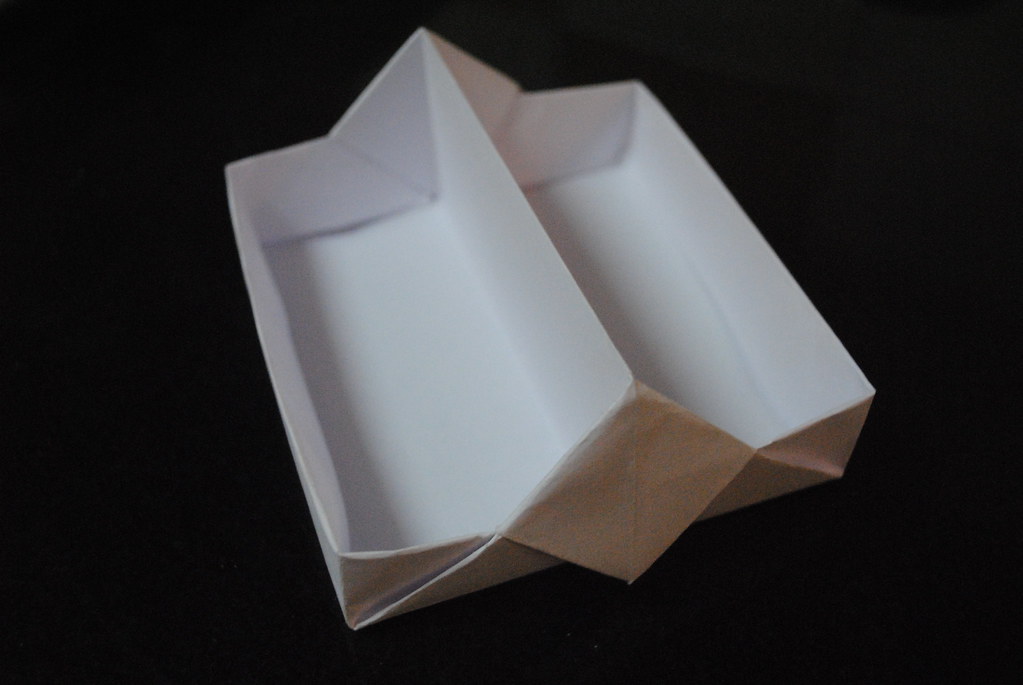Thursday 12 April 2012
Toolbox, another new design!
Toolbox
Design by Krishna Panyam
From A4 (297mm x 210mm)
Final size: 100mm x 110mm x 110mm
Diagram not published.
I came up with this nice shape yesterday afternoon. I love designs which do not need a square, and can use the full A4 sheet. I think this will look nice with duo coloured paper, so I am going to post a picture once I do it.
Origami at Summer Camps
I have been teaching a few children of ages ranging from 5 years up to 12 years. It is rewarding yet frustrating, as most of them just do not follow instructions! And usually these summer camps have so many kids that it take a long time going around the room and helping each one to finish a model. I need to research and find the right models for each age group.
I guess what keeps me going is the thought that some of these children are likely to get interested and will continue to learn Origami.
Friday 6 April 2012
Corrugations and more
 |
| Marble Wave or Birefrigence |
 |
| The other side of Birefreigence |
Crease Pattern published by Ray Schamp.
It can be seen as the intersection of two series of corrugations, one going radially, and the other one perpendicular to it.
 |
| Lightning Storm |
Ray Schamp's photo stream on Flickr has many more interesting corrugations, such as this lightning storm!
And here is a much simpler model which is also very interesting. You can easily while away the hours playing with these corrugations!
Spherical Origami nº14
Design by Jun Mitani.
Folded from a single rectangle.
Diagram not published.
I saw this on Flickr a couple of weeks ago, and it fascinated me. Initially it looked impossible, but knowing that someone has done it, and seeing a picture always spurs you on.
Of course a little knowledge of engineering drawing does help (hint: particularly intersection of two cylinders!)
More Corrugations
This is from a long rectangle (left over from making a square from an A4 sheet) pleated in 8, and a lot of 90º folds. For example, the corners are nothing but two 90º bends back to back.
4 Origami Hyperbolic Parabolas

This shape created by this model is sometimes called a "saddle". The basic design is to take a square and fold alternating mountain and valley squares all the way to the center.
This page shows more details of how to fold this.
When you collapse the model, it will no longer stay flat, and deforms into a hyperbolic shape (as you can see in the picture on the left), all the way into a straight line.
One more interesting feature of this model is that it can be "flipped", which is hard to explain in words.
In this case, I have taken a large square sheet (15x15 cm), divided it into 4 equal squares, and then folded the design on each of the 4 squares.
Here are a couple of other views of the model. The different shapes are created by flipping each of the 4 smaller squares .
The flipping of the smaller squares which are constrained by the fact that they are still joined to each other, creates all these variations.

Origami Classes
The first batch of the weekend Origami classes at Jaaga is getting over tomorrow, and I will restart them after a couple of weeks of break. Meanwhile, this being summer vacation time, I am teaching Origami at a couple of summer camps. There will be lots of kids, so I have to be really patient and well prepared.
***
Subscribe to:
Posts (Atom)





